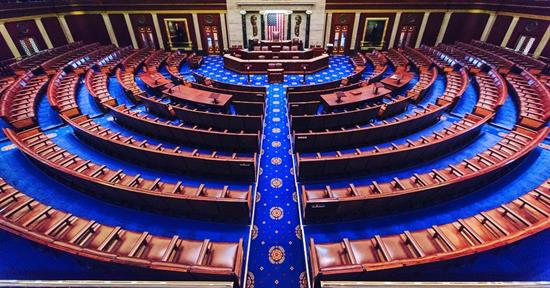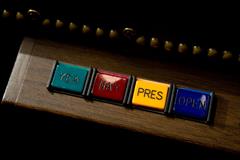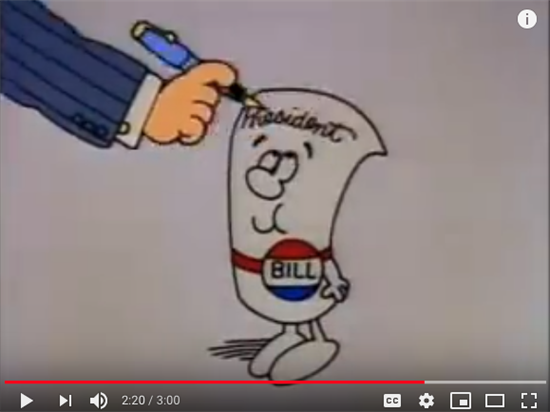What can the legislature do if the President refuses to sign a bill into law?

Creating laws is the U.S. House of Representatives' most important task. All laws in the U.s.a. begin equally bills. Before a nib can become a police force, it must be canonical by the U.S. Firm of Representatives, the U.S. Senate, and the President. Let's follow a bill's journey to become law.
The Bill Begins
Laws begin equally ideas. These ideas may come up from a Representative—or from a denizen similar you. Citizens who accept ideas for laws can contact their Representatives to discuss their ideas. If the Representatives agree, they research the ideas and write them into bills.
The Bill Is Proposed
When a Representative has written a bill, the pecker needs a sponsor. The Representative talks with other Representatives near the pecker in hopes of getting their support for it. One time a nib has a sponsor and the support of some of the Representatives, it is ready to be introduced.
The Bill Is Introduced
In the U.S. House of Representatives, a nib is introduced when it is placed in the hopper—a special box on the side of the clerk's desk. Only Representatives can introduce bills in the U.S. House of Representatives.
When a nib is introduced in the U.S. Firm of Representatives, a nib clerk assigns information technology a number that begins with H.R. A reading clerk then reads the pecker to all the Representatives, and the Speaker of the House sends the bill to one of the House standing committees.
The Nib Goes to Committee
When the bill reaches committee, the committee members—groups of Representatives who are experts on topics such equally agronomics, education, or international relations—review, research, and revise the nib before voting on whether or not to send the bill back to the Business firm floor.
If the committee members would like more than information before deciding if the bill should be sent to the House floor, the bill is sent to a subcommittee. While in subcommittee, the nib is closely examined and proficient opinions are gathered before information technology is sent back to the committee for approval.
The Pecker Is Reported
When the committee has canonical a bill, information technology is sent—or reported—to the House floor. In one case reported, a neb is ready to exist debated by the U.S. House of Representatives.
The Bill Is Debated
When a neb is debated, Representatives discuss the bill and explicate why they concur or disagree with it. Then, a reading clerk reads the neb section past section and the Representatives recommend changes. When all changes accept been made, the bill is ready to be voted on.
The Bill Is Voted On

At that place are three methods for voting on a neb in the U.S. Business firm of Representatives:
- Viva Voce (voice vote): The Speaker of the Firm asks the Representatives who back up the bill to say "aye" and those that oppose it say "no."
- Partitioning: The Speaker of the Firm asks those Representatives who support the bill to stand up and be counted, and then those who oppose the bill to stand upward and be counted.
- Recorded: Representatives record their vote using the electronic voting system. Representatives can vote yes, no, or present (if they don't desire to vote on the nib).
If a bulk of the Representatives say or select yeah, the bill passes in the U.Southward. House of Representatives. The nib is then certified by the Clerk of the Firm and delivered to the U.Due south. Senate.
The Bill Is Referred to the Senate
When a bill reaches the U.South. Senate, it goes through many of the same steps it went through in the U.S. House of Representatives. The pecker is discussed in a Senate committee and then reported to the Senate floor to be voted on.
Senators vote by vocalization. Those who support the neb say "yea," and those who oppose it say "nay." If a majority of the Senators say "yea," the bill passes in the U.S. Senate and is fix to go to the President.
The Bill Is Sent to the President
When a bill reaches the President, he has three choices. He can:
- Sign and pass the neb—the beak becomes a law.
- Refuse to sign, or veto, the beak—the nib is sent back to the U.Due south. House of Representatives, along with the President's reasons for the veto. If the U.S. House of Representatives and the U.S. Senate however believe the pecker should become a police force, they tin can hold another vote on the neb. If two-thirds of the Representatives and Senators support the bill, the President'southward veto is overridden and the bill becomes a law.
- Practice nothing (pocket veto)—if Congress is in session, the bill automatically becomes police force after ten days. If Congress is not in session, the bill does not become a law.
The Bill Is a Law
If a nib has passed in both the U.Southward. Firm of Representatives and the U.S. Senate and has been approved past the President, or if a presidential veto has been overridden, the bill becomes a law and is enforced by the government.
To learn more, watch this informational video:

millardsurpoked1982.blogspot.com
Source: https://trahan.house.gov/kids/how-a-bill-becomes-a-law.htm
Belum ada Komentar untuk "What can the legislature do if the President refuses to sign a bill into law?"
Posting Komentar